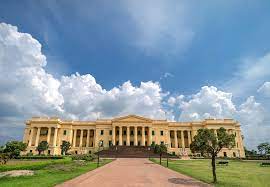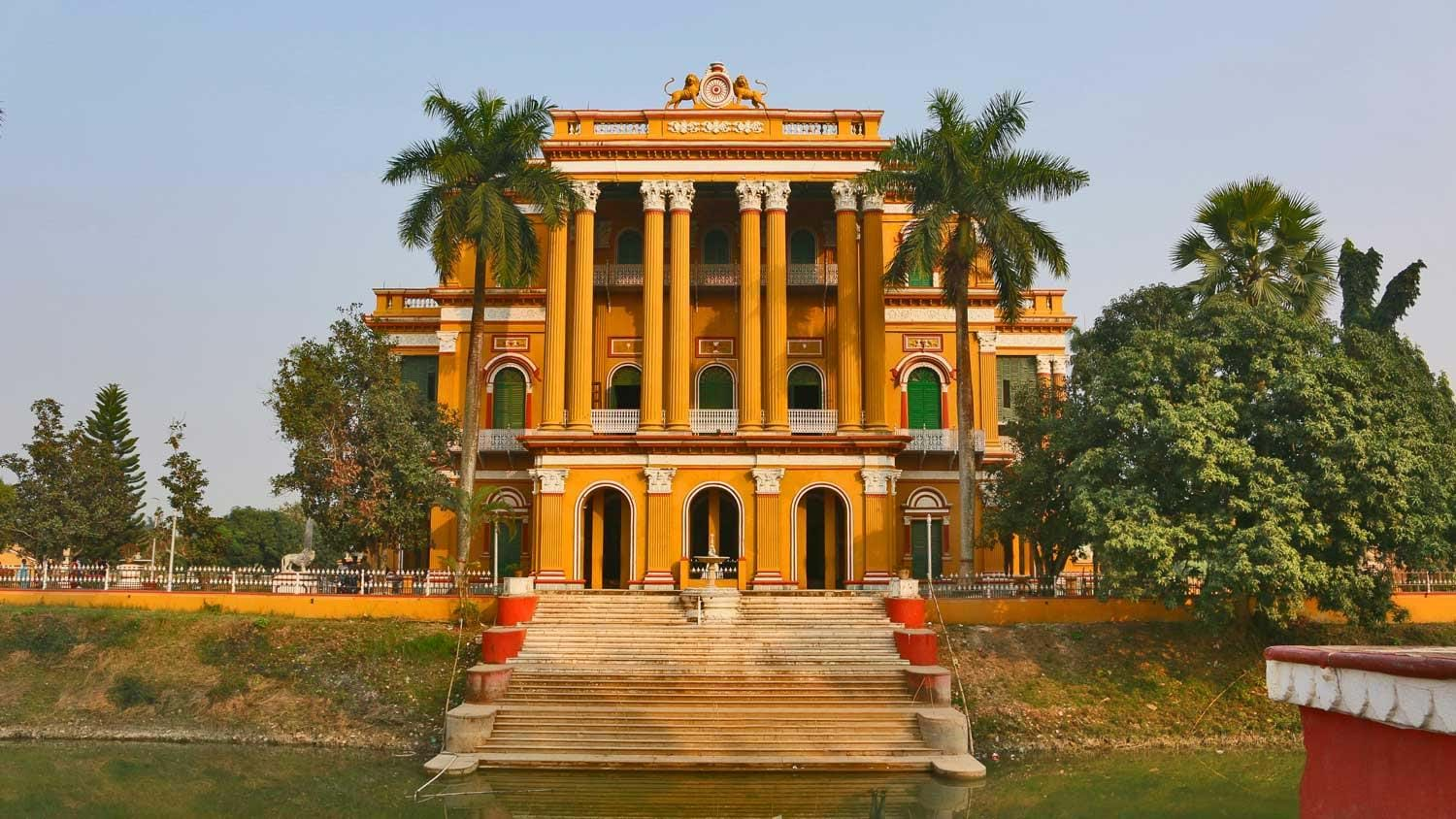Historycal place Murshidabad:
The town Murshidabad is situated on the Bhagirathi River it is located in the center of the state of West Bengal. This Town is known as a Historical place. One at a time Murshidabad was the Capital of the Mughal Empire at the time of the 18th Century. At that time Bengal was the richest Mughal province. Murshidabad was a cosmopolitan city at that time.

Murshidabad
In the 16th century, the Mughal Emperor Akbar called this place Makhsudabad. Now it is called Murshidabad, in 1704 the Nabab Murshid Quli Khan moved the capital from Dacca in Bangladesh to the town Murshidabad. It was the capital until 1790 and it was the seat of the prominent descendants of the Nabab of Bengal.

Here the historical place is Nizamuddin Kila, also called the Hazaarduari Palace, this palace has One Thousand Doors. The Palace was made in Italian Style in the year of 1837. Pearl Lake it is also called the name of Moti Jhil, is situated the south with Muradbagh Place and the Khushbagh Cemetery, containing the tomb of Ali Vardi Khan and the last great Nabab Siraj ud Daelah. He is defeated in the Battle of Plassey by the British and Nabab’s grandnephew.
How to Reach Murshidabad
By Train/Rail
The Murshidabad railway station is connected by trains to Howrah, Mumbai, Chennai, Ahmadabad, and several other cities in India. Taxi services are available from the station.
By Bus
Murshidabad is well connected by road. State-run buses from Kolkata, Burdwan, Rampurhat, Suri, Bolpur, Malda, Krishnagar, and Durgapur ply regularly to Murshidabad. One can also hire a taxi to reach Murshidabad from Kolkata, Burdwan, Rampurhat, Suri, Bolpur, Malda, Krishnagar, and Durgapur places.
By Air
The nearest airport is in Kolkata, located about 195 km from Murshidabad. The airport is well connected by flights to Indian cities including Mumbai, Delhi, Chennai, and Bengaluru. From the airport taxi services are available for Murshidabad.
The Visited Place Of Murshidabad
- Hazar Duari Palace
- Bara Imambara
- Clock Tower
- Madina Masjid
- Zurud Masjid
- Katra Masjid
- Fouti Masjid
- Jahan Kosha Cannon
- Kathgola
- Motijhil
- Motijhil Masjid
Hazar Duari Palace:
The Palace Of Thousand Gates. The palace has 1000 doors – 900 real and 100 fake. The palace was built by Sayyid Mubarak Ali Khan in the year of 1837. Here you see the architecture of the European style. Now a day it has been converted into a Museum. The Hazar Duari Palace is the biggest site Museum of the Archaeological Survey of India. You can see here 20 Galleries that have been displayed for the public. You will see here that time used various weapons, French and Italian art, Oil painting, Marble statues, rare books, Old Maps, Land revenue records, and many more things belonging eighteen to nineteenth centuries see here.
Bara Imambara:
It is also called Nizamat Imambara. This imamabara is a Shia commemoration ceremony hall is especially used for Muharram. This is situated opposite the palace of Hazarduari and the Bhagirathi river banks. Bara Imambara was built by Nabab Nazim Mansoor Ali Khan Feradun Jah in the year of 1847. Here you see one more imambara that was made of wood built by Siraj Ud Daulah. This imambara was damaged due to fire. This is one of the largest imambara whose length is 680 feet. It is divided into three parts the central part is the Madian Mosque, the west side has a two-storied Mosque, and the east part is the Nowbat Khana.
Clock Tower
Here you can see a Big Clock, that is Ghari Ghar. This tower is situated between the Hazarduari Palace and the Imammbara. It was built by the Sagar Mistiri. And you also see the top of the tower is a big-sounding bell.
Madina Masjid
The Madina Masjid is a Masque in the Nizamat Fort Campus in Murshidabad. It is the oldest Mosque built by the Siraj Ud Daulha, it was built in the 18th century and is situated in front of the Imambara. The old Madina Masjid was partly burnt by the fire in the year 1846 but it was completely burnt by the fire on 23rd December 1846. Nabab Mansur Ali Khan built The new Madina Mosque as a part of Imambara in the year 1847.
Zurud Masjid
Zurud Masjid it aslo called Yellow Moswue, it is located a few meter from the Hazarduari Palace and the beside the bank of Bhagirathi River. It built by the Nabab Siraj Ud Daulha in the year of 1756-57.
Katra Masjid:
The Katra Mosque is a former caravanserai and the tomb of Nawab Murshid Quli Khan. It was made of 1723-24. The mosque was damaged due to being well-maintained. The Main mosque has five Domes, out of five two domes were damaged by the earthquake in the year 1897. In the mosque 2000 people could offer prayers at the same time.
Fouti Masjid:
Fouti Masjid was built by the Nabab Sarfaraz Khan in the year of 1740. The old Fouti Mosque was one of the largest mosque. This abandoned mosque completed only two domes out of five. After the death of Sarfaraz Khan construction was not done, ever since then the mosque has been in that same situation. It is around 5100 square feet.
Jahan Kosha Cannon:
Jahan Kosha is known as the Great Gun that destroyer the world. It was located 400 meters from Katra Masjid, the place name is Topekhana where Jahan Kosha is located. Topekhana is the park and the entrance gate of that time was the capital of Bengal, Bihar and Orissa.
Kathgola:
Kathgola was the Palace of that time the capital of Bengal, Bihar, and Orissa. Katgola often referred to the Kathgola Palace, Kathgola Gardens, and Kathgola Tempal was built by Raja Dhanpat Singh Dugar and Laksmipat Singh Dugar. It is said that the black roses cultivated in the place of that time, now here you see a Mango tree garden around the area of 30 acres. Adinath Temple is known as Paresh Nath Temple which is located in the Kathgola.
Motijhil:
The Mosque of Shahamat Jang is situated in the northern side of Motijhil just outside of the Moti Jheel park this Masjid remains the Nabab period. The mosque was built by Nabab Nawaei Muhammad Khan who is the husband of Ghasuti Begal in the year of 1750. Motijhil known as a Company’s Lake was associated with the East India Company. This lake is shaped like a horseshoe it is situated in Murshidabad, West Bengal.
Motijhil Masjid:
It is also known as Kala Masjid and also Motijheel Masjid. The masjid was built by Nabab Muhammad Khan in 1750, he named it Kala Masjit. Because the name of the mosque, Ghaseti Begam, her Husband, and also Ekramulla died at a young age. Both of them were buried in place of Jama Masjid Thus, the masjid name is Kala Masjid.